
Projects: Nanonation Takes On Raising Nebraska
April 18, 2016 by Dave Haynes
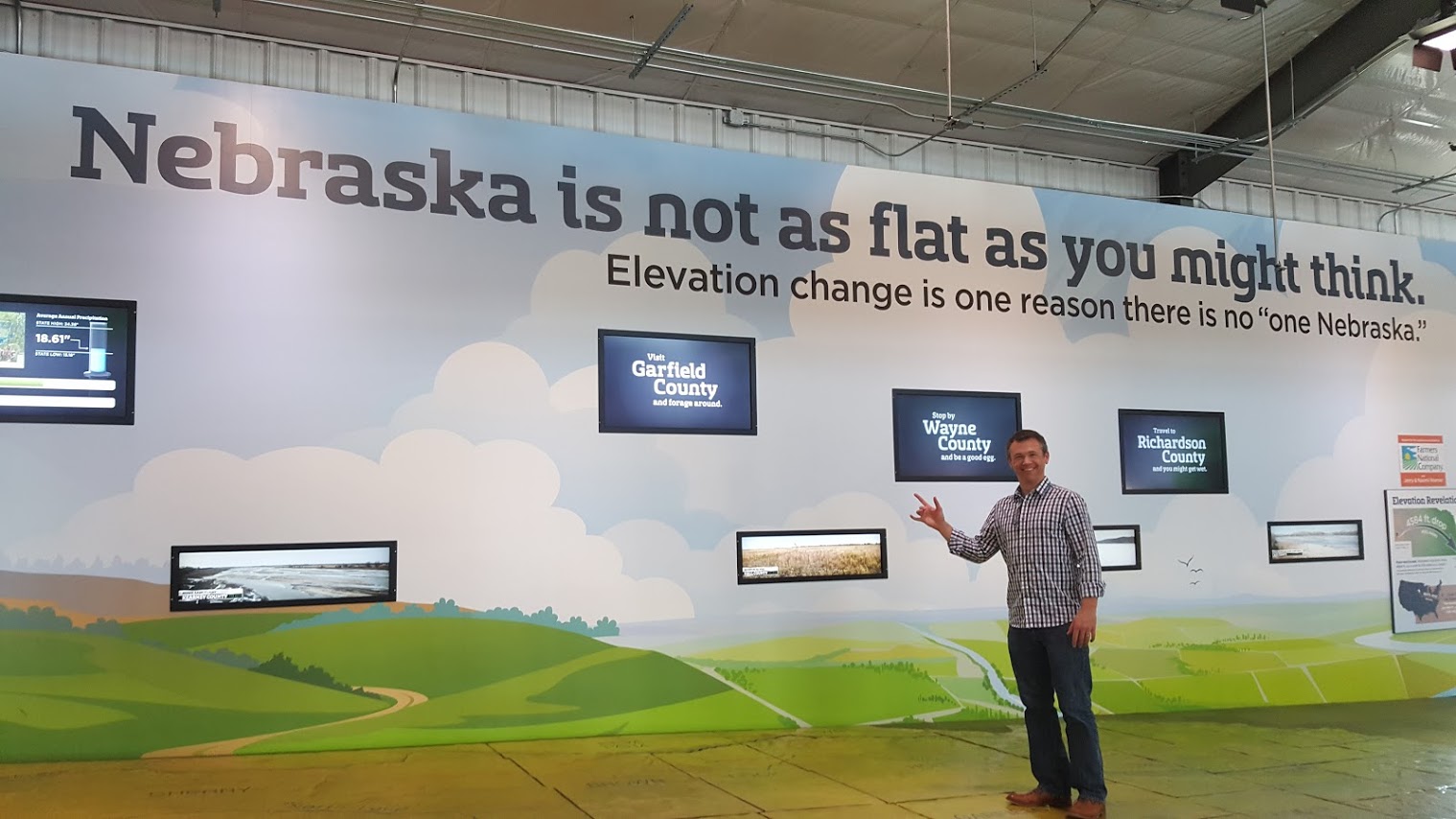
Nanonation CEO Bryan Fairfield
Raising Nebraska is a 25,000 square foot, interactive digital-heavy exhibit on the state fairgrounds that’s designed to help visitors better understand and appreciate that state’s big industry, its advances, and the impact it has locally and globally.
Located in Grand Island, about three hours west of Omaha, the exhibit was put together and is now managed by a wing of the University of Nebraska-Lincoln, working with the Nebraska Dept. of Agriculture and the Nebraska State Fair.
I went down there last week, on the invitation of the software company Nanonation, to have a first-hand look at the many different interactive pieces put together for the exhibition space, which pulls in mobs of schoolkids on field trips, but also a broader cross-section of local and regional visitors.
It’s pretty impressive in its efforts to explain how farming works and how food gets to tables – something very relevant even in a farm-centric state like Nebraska, since more and more farms are run by big corporations and not by generations of families.
It was also interesting to see the amount of work put in by Nanonation to develop a wide variety of hands-on digital experiences that are way outside the norm of just about any digital signage CMS companies. I’ve known Nanonation for years, and always thought of the Lincoln-based company as one offering retail-centric signage software, but also doing some interactive work. From what I saw, I’d tend now to describe the company as an interactive software firm that also happens to have an enterprise-grade digital signage platform.
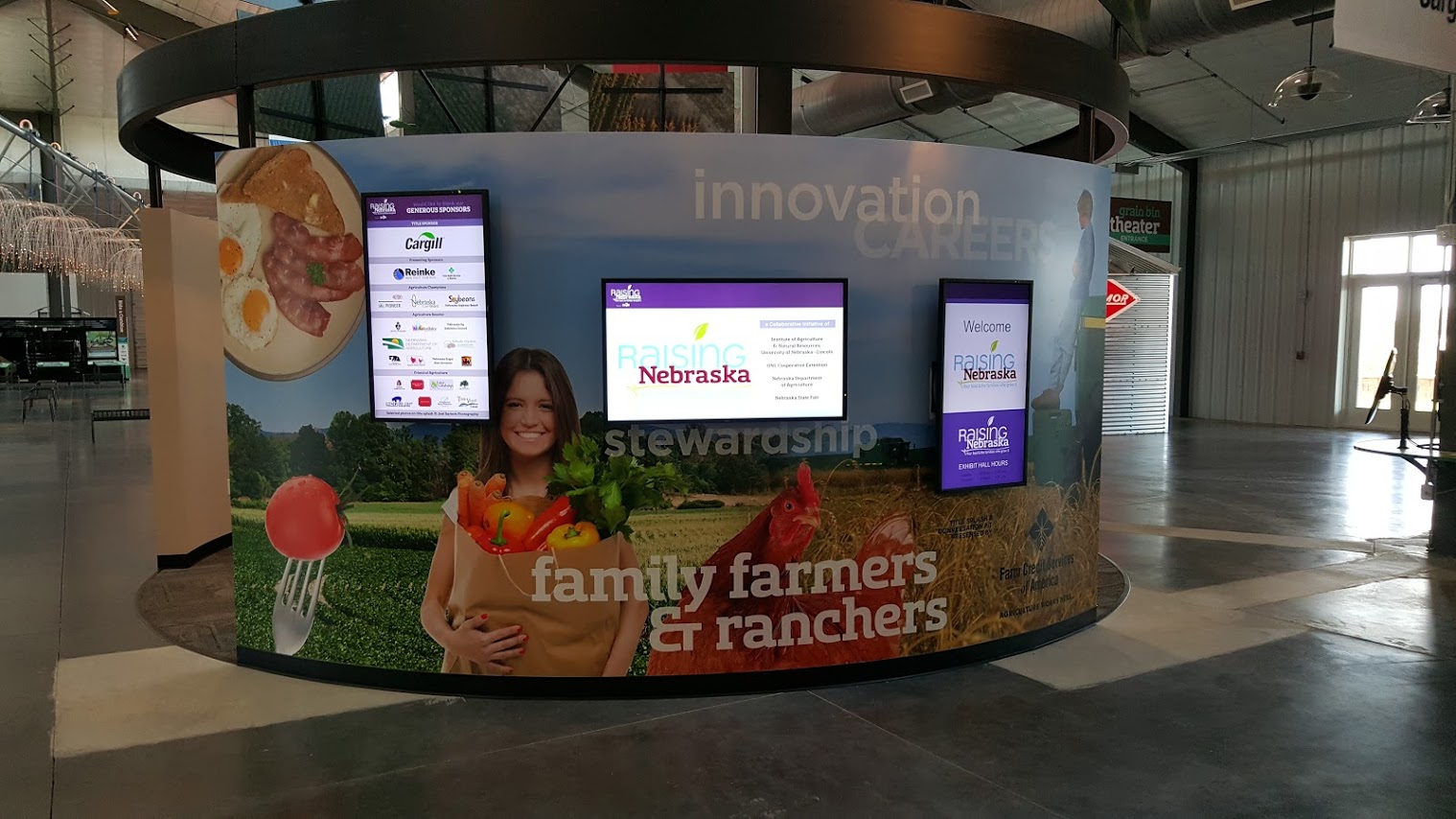
The Raising Nebraska project is one of numerous local and regional museum and exhibition projects that the company is finding itself working on, and CEO Bryan Fairfield says it’s an unexpected vertical his team is nonetheless planning to chase.
Getting there from Lincoln is two hours of interstate and endless farmland, and then into the small regional center of Grand Island, where the state fair is now held. The exhibition building is one half of very big, very long barn, and you get to see the world’s biggest overalls when you get inside. Tick that one off my bucket list!
There’s a series of exhibitions spread around the hall, most of them developed and delivered by Nanonation, with more coming. Some are pretty straight-forward, touch a link, watch a video stuff. But here are the more involved ones …
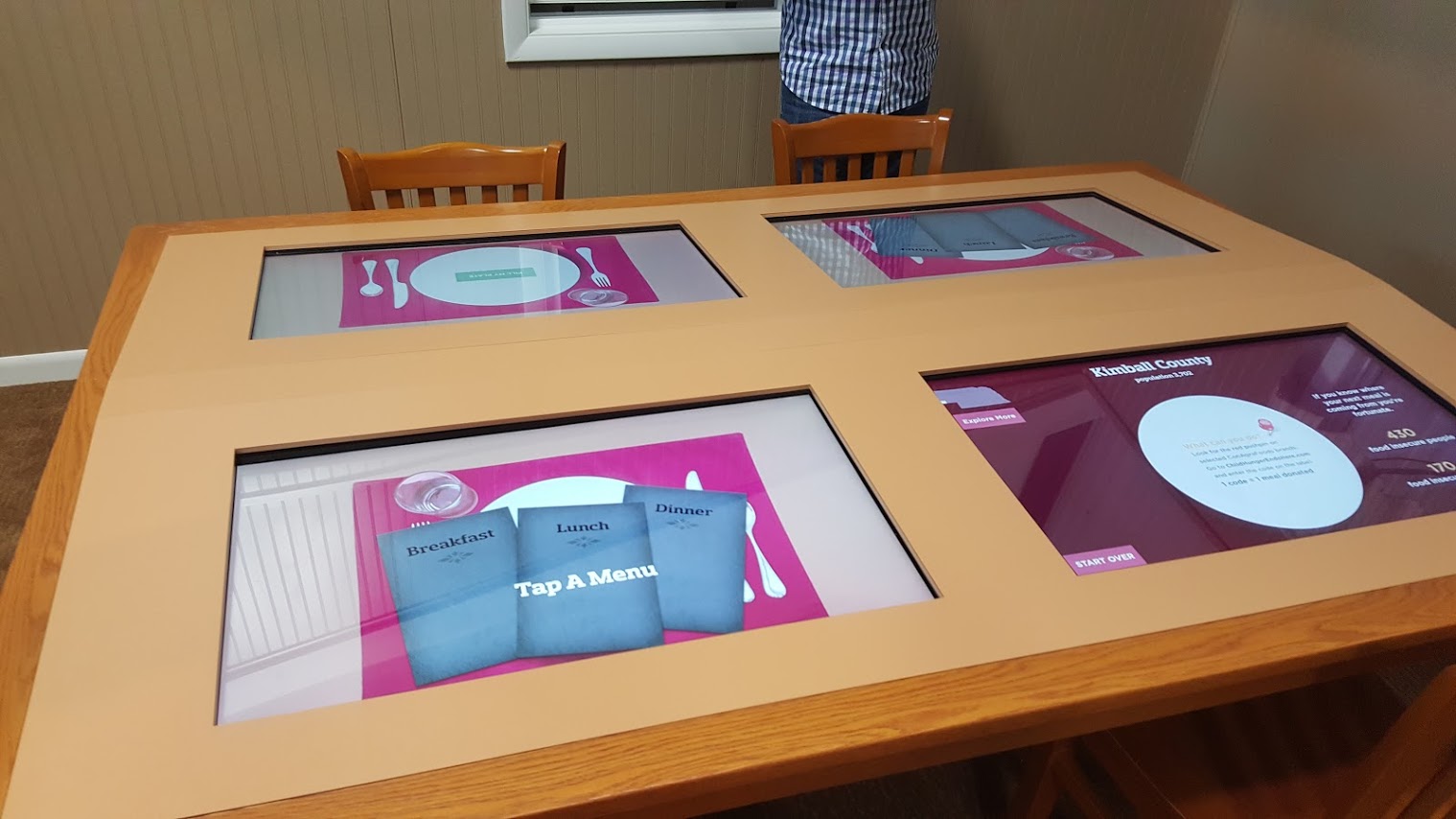
In the dining room of the Agri-House, visitors can drag items onto a virtual, interactive placemats at the four-seat dining table, and learn where their food is produced. They also get updated data, by county, showcasing total population, the population percentage that suffers from food insecurity, and the number of children affected.
Kids can climb in to the cab of a combine, and use the touchscreen to fire it up and harvest crops in the realistic simulator, using three screens to make it somewhat immersive.
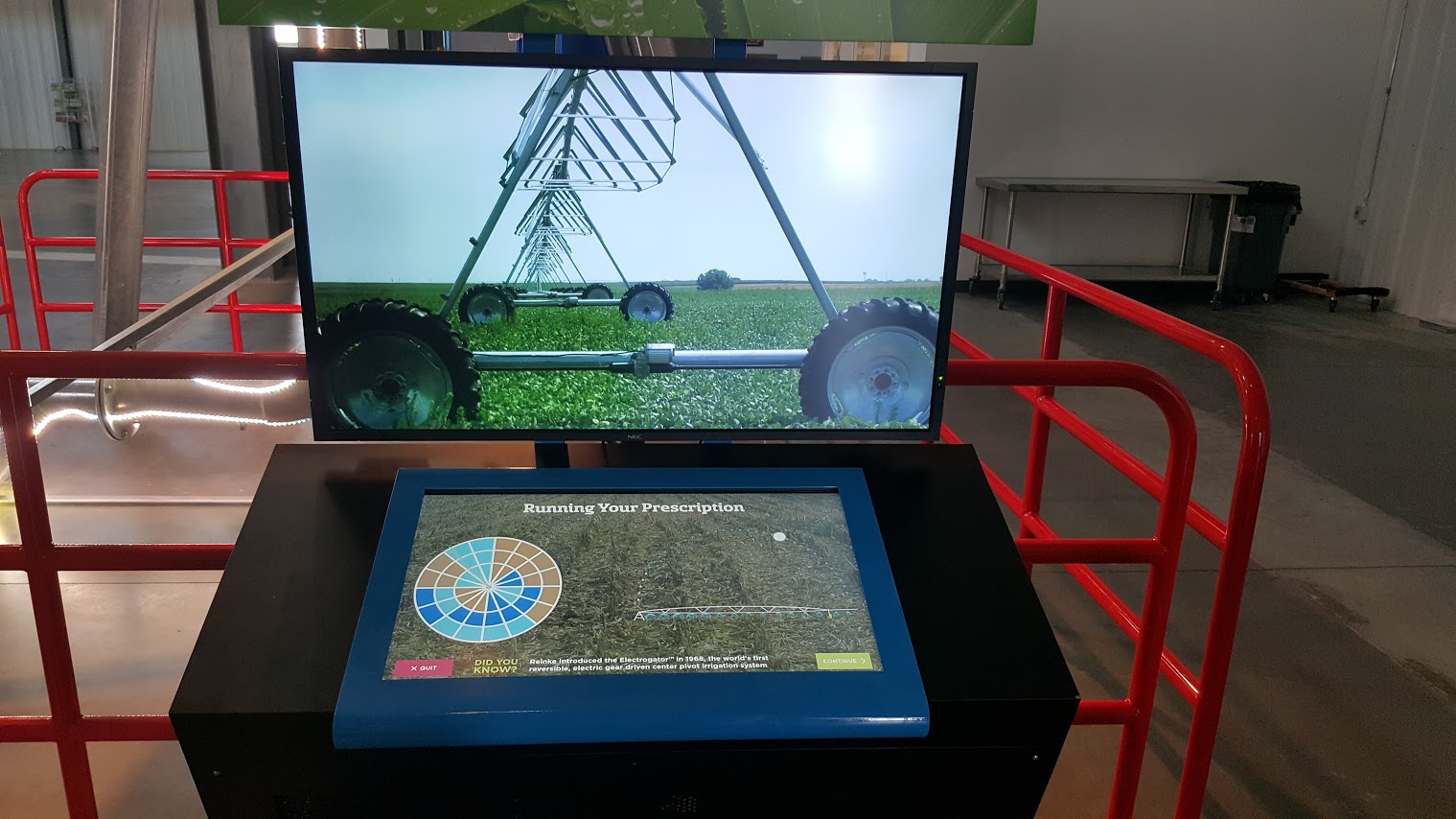
A section of one of those giant rolling sprinkler systems spans much of the building, and at its control end there’s a pair of screens that explain the complexities of watering fields and crops at the right time and with the right amount of water. A game is built in so visitors can build and try out their “prescription” for the giant sprinklers. When that game runs fiber optic sprinkler heads up light up.
Nano’s creative team spent hours and hours with academics and engineers working out a user experience and information that accurately reflected what was going on with those watering systems.
I liked a set of videos that showed the journey of products like milk in reverse, so kids in particular could understand how that glass of white goodness ended up in front of them at home.
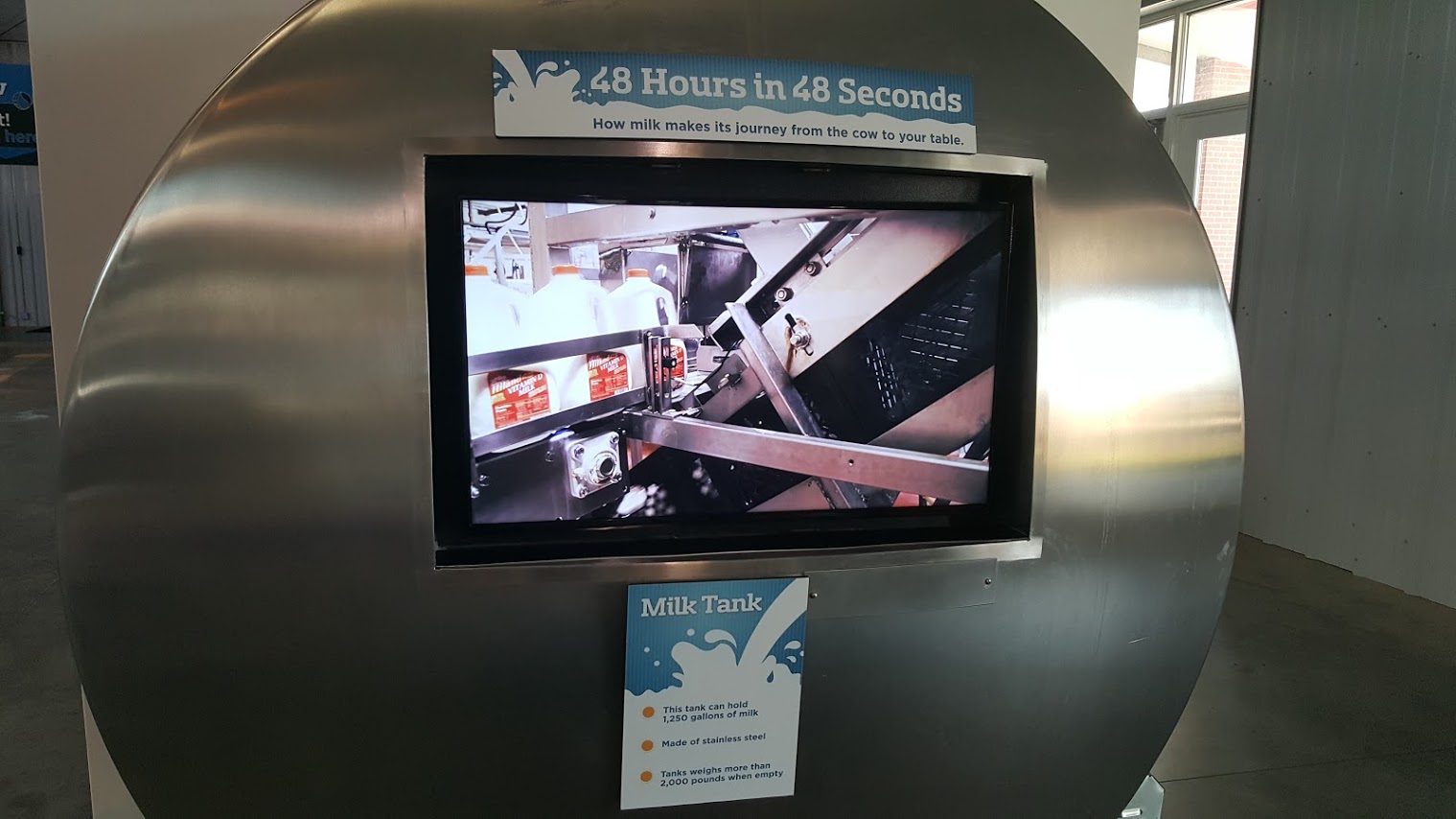
The biggest display, except for that irrigation system, is the Walkable Map – a giant topographic map of Nebraska that shows the difference in elevation and precipitation as you travel from east to west across the state. Nanonation built a touchscreen set up that allows visitors to learn about the top crops and livestock in featured counties, and discover the six different eco-regions in the state.
That set-up, plus many of the others, are tied to live and/or mapped data, so that when information gets refreshed, it gets refreshed on the screens without any re-edits or artwork updates needed.
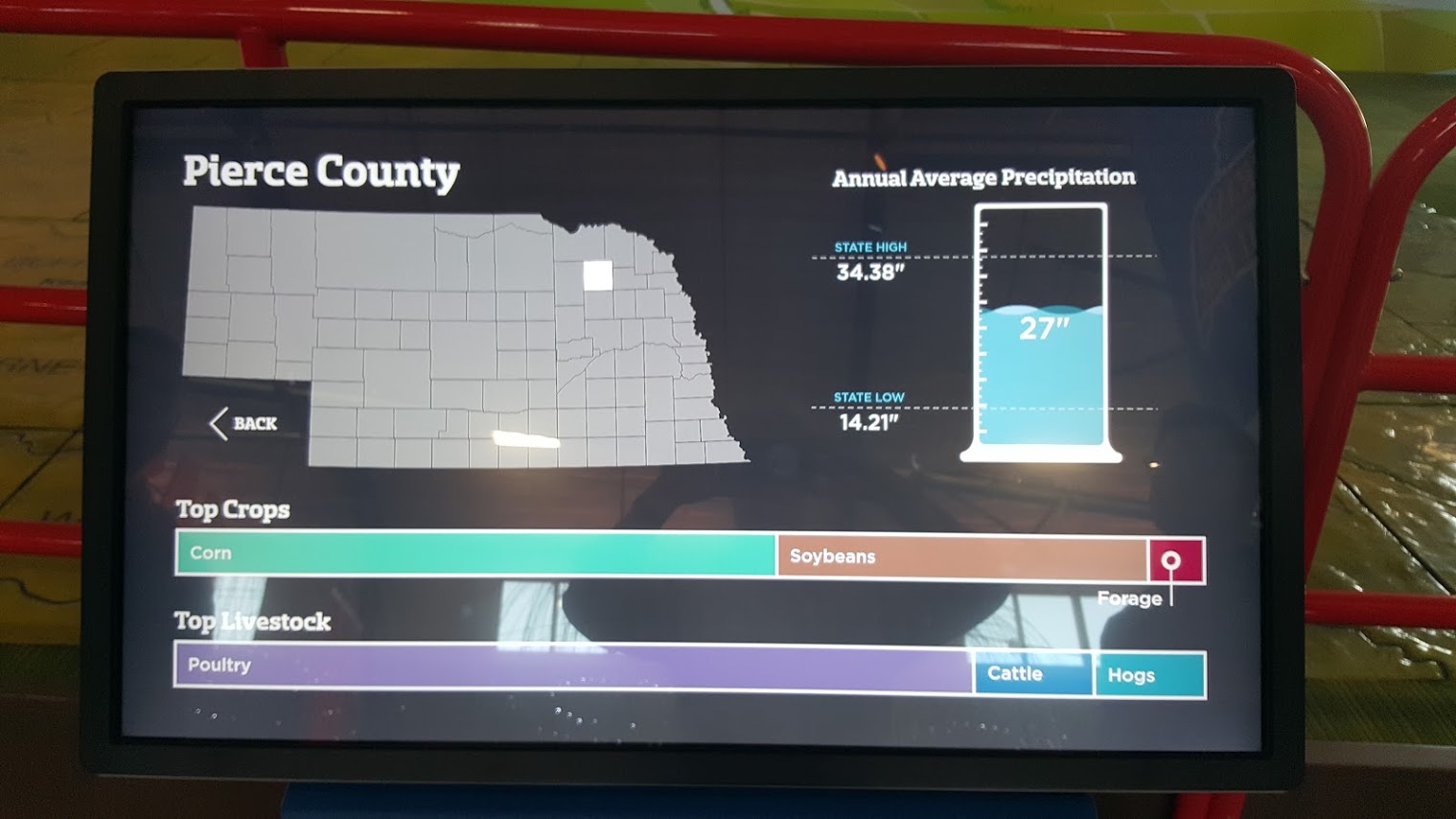
Big interactive agencies on the US coasts will tend to win the multi-million jobs for high-profile, high budget museums and exhibits. But there’s a vast number of children’s museums, information centers and halls of fame across the US and Canada that those kinds of agencies can’t really service, because the budgets are smaller and they don’t have the kiosk expertise to design and build screens that will survive an endless torrent of eight-year-olds.
That’s the kind of work Nanonation is happy to take on, and they showed me a great work in progress at the Nebraska High School Sports Hall Of Fame, a few blocks from their offices in downtown Lincoln.
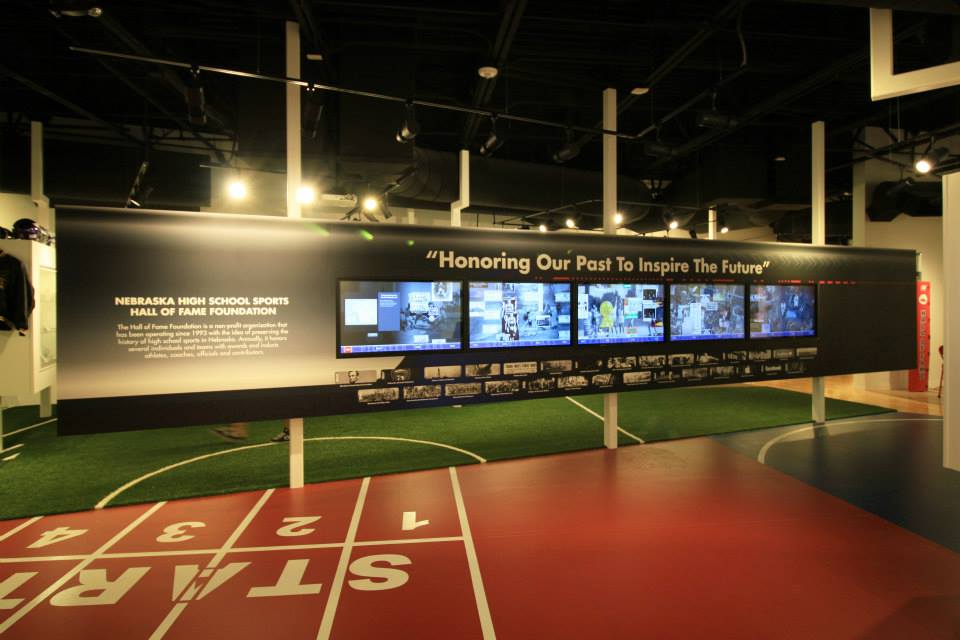
The company is also still heavily involved in more traditional signage jobs, primarily in retail. Fairfield, who moved up from VP Sales to CEO four years ago, says scaled digital signage jobs in everything from Harley dealerships to Louis Vuitton stores is still roughly 50% of the company’s work.
I’d never been to Lincoln, but grew up in Western Canada, so I know small towns and cities, flatland, and big blue skies. Some pleasant surprises: Lincoln’s a lot bigger than I thought (300,000 people); there’s a great bar and restaurant scene; and between there and Omaha (about 45 minutes east), there’s a very active tech scene, with one of its key drivers former Nanonation CMO Brian Ardinger. The sports-focused software firm Hudl is located in Lincoln.
The city may be what companies in major metro areas think is the middle of nowhere, but Nanonation and Lincoln seem to have a lot happening. Thoroughly enjoyed the quick visit.



Thanks so much for the coverage of Raising Nebraska. It is a great facility—and continues to expand in telling the story of food and the families who grow it. But I take serious exception to one of your comments. The fact is that most farms are NOT run by big corporations, but are indeed family-owned and operated. For example, 96% of the corn farms in the U.S. are family farms (Source: USDA)—many of them multi-generational. That’s actually one of the important messages found in Raising Nebraska. I urge you and your readers to visit http://www.cornfarmerscoalition.org/index.html to discover more about America’s corn farmers.
They can also visit the Raising Nebraska YouTube channel to view a number of videos on farming practices, animal care and sustainability featuring actual farmers, livestock producers, and university researchers.
Thanks.
Mr Haynes
Your article is a good reflection of the Raising Nebraska venue, however two key points need to be addressed, just so you know, 1) “A section of one of those giant rolling sprinkler systems spans much of the building” The system you refer to is known as a Pivot Irrigation System, which (3) of the worlds largest manufactures/inventors are located in Nebraska with Reinke, Lindsey and Valmont. 2) “farm-centric state like Nebraska, since more and more farms are run by big corporations and not by generations of families.” The state of Nebraska is a family farming state. The exhibits at Raising Nebraska were financed by corporations, however when you watched the videos in the grain bin theater or various kiosks it should have been very clear it was the family that made farming in Nebraska the top in the country.
Also keep in mind (3) of worlds leaders in Grain Bin manufacturing/inventing are in Nebraska, (2) in Grand Island – Chief manufacturing and MFS Global, plus Behlen manufacturing.
You comments about Nanonation and the various technology are spot on,and I appreciate your opinion in the overall product. Just wanted you to know more about our State and the technology we lead in Agri Business. Thank you